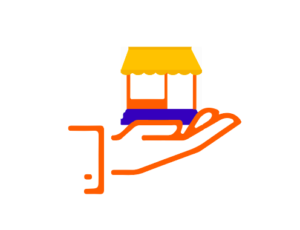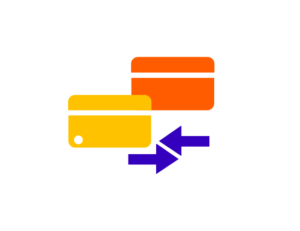Opinions expressed by CandyBar contributors are their own; this guestpost is contributed by Fundera.
Opening up a second location for your small business is an exciting but daunting task. And while your second location is an indicator of your store’s burgeoning success, it also involves a slew of logistics and upfront costs.
With a little help and a few smart financing decisions, however, you can turn opening your second location into a process that’s far more exciting than it is stressful.
Beyond traditional small business loans, financing options for your second store location come in many different shapes and sizes. To help you figure out the best way to go about accessing financial resources for your second store location, we’ve compiled this guide to the top financing options.
Here is your ultimate guide to financing your store’s expansion:
What are the Costs for a Second Store Location?
-
- Rental / Lease
- Renovation, Equipment & Fixture
- Inventory
- Capital for Staff
- Marketing Costs e.g. Grand Opening
Before we dive into the top financing options to consider for your second location, let’s run through all the costs to keep in mind as you prepare to expand.
Of course, when opening new locations, you’ll need to cover the costs of the location itself. Whether it’s a down payment on a real estate purchase or a security deposit and first month’s rent, there will be an upfront cost for your next location.
Paying for the storefront itself is far from the only cost you’ll need to address when opening up your second store location. You’ll also have to invest in fixtures and equipment for your second location, too. Think checkout counters, point of sale systems, and product displays like shelves or hangers.
You’ll also need to fill your second store with inventory. For your first store location, you’ve likely gotten into the habit of stocking inventory in smaller waves and on a rotating schedule. For this entirely new location, you’ll have to make a massive inventory order all at once to make sure your shelves are fully stocked before opening. This lump sum order will be a significant cost that you’ll need to address to open a second location.
And finally, make sure your business has enough capital to pay the employees you’ll need to hire to staff your second store location. As your business’s physical footprint expands, your team will have to expand with it, including potential marketing costs for the new location. Make sure you’ll be able to cover the additional payroll as well.
Ways to Finance a Second Store Location
With our costs in mind, let’s discuss various ways to cover these significant investments. Depending on which of the expansion costs you want to address with financing, you have a host of funding options to choose from. Here are the details on the top forms of business financing for opening up a second store location:
1. Equipment loans
If you need to purchase an expensive piece of equipment for your second store location, a small business equipment loan is a great financing option. Equipment loans offer a lump sum of capital that borrowers pay back, plus interest, over a set repayment schedule.
The piece of equipment you purchase with the loan will act as collateral for the loan itself. Because this loan is “self-secured,” equipment financing lenders tend to offer higher approval rates, larger loan amounts, lower interest rates, and longer repayment periods than what you might otherwise qualify for. 
2. Inventory financing
Inventory financing is another form of secured financing that doesn’t require borrowers to put up more collateral. You can take out an inventory financing loan to cover the costs of a large order. with the inventory itself acting as your collateral. (A word of warning, though: Inventory financing often comes with lengthy due diligence process, and generally isn’t available for stores that stock perishable inventory.)
That said, if your business qualifies for inventory financing, it offers the same advantages of self-secured financing that equipment loans offer. As a result, you can access lower interest rates, larger loan amounts, and longer repayment terms than you would have access to through unsecured business financing.
3. Commercial real estate loans
If you’re planning on purchasing your second storefront location, then you can also consider getting a commercial real estate loan. Like inventory and equipment financing, commercial real estate loans provide capital for a specific purchase—in this case, of course, that purchase is commercial real estate. The property you purchase will then act as collateral for the commercial real estate loan.
Because real estate acts as valuable collateral, commercial real estate loans offer some of the most ideal terms on the market—check out SBA CDC/504 loans for loan amounts of up to $5 million and repayment terms as long as 25 years. 
4. Microloans
Alternatively, if you don’t need a huge amount of capital, you could consider a microloan. Microloans offer short-term business funding of $500 to $50,000. The average SBA Microloan, for instance, is for $13,000, with a maximum repayment term length of six years.
Proceeds of microloans can typically go towards a wide variety of use cases, such as working capital. So, if you need help addressing the everyday costs of opening a second store location, a microloan could be an ideal solution.
5. Credit cards
Finally, if you need access to credit for the many miscellaneous costs that expansion will entail, then a business credit card could be a top financing option for you. Many business credit cards offer 0% intro APR periods, which provide new cardholders with interest-free balances for their first months with the card—as long as they make their minimum monthly payments on time. Sometimes these 0% intro APR periods can stretch as long as 12 months, so new cardholders can access up to a year of no-interest spending.
Financing a Second Store Expansion Takeaways
You’re now well-acquainted with the costs of expanding your store location—and how to afford all those costs. Keep in mind that though the top five options will address varying expansion costs, they’re not mutually exclusive to each other. You can string together several of these five financing options to best address your needs and preferences. Always, however, do your homework and make sure you’re only taking on debt that you can afford.
 Eric Goldschein is an editor and writer at Fundera, a marketplace for small business financial solutions such as business loans. Eric has nearly a decade of experience in digital media and writes on financing, marketing, entrepreneurship, and small business trends.
Eric Goldschein is an editor and writer at Fundera, a marketplace for small business financial solutions such as business loans. Eric has nearly a decade of experience in digital media and writes on financing, marketing, entrepreneurship, and small business trends.


